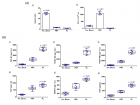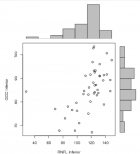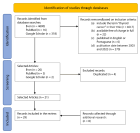Table of Contents
Comparative study of once daily tacrolimus (extended-release capsule) versus conventional twice daily tacrolimus in renal transplant recipients
Published on: 15th November, 2022
Background: One of the common causes of chronic allograft nephropathy is nonadherence to medications, contributing to 30% of graft loss in the developed world. The non-adherence is attributed predominantly to pill burden.Once-daily dosing of tacrolimus instead of conventional twice-daily dosing may enhance adherence to medication and improve long-term outcomes. The present study is a retrospective analysis comparing the safety and effectiveness of De Novo (use from day 1) once daily (OD) Tacrolimus (extended-release capsules) to conventional twice-a-day (BD) tacrolimus, in renal transplant recipients operated at Suguna Hospital Bangalore India. Material and Methods: Records of 24 Transplant patients on De novo OD Tacrolimus were analyzed and compared retrospectively to 24 transplant patients treated De Novo with conventional BD tacrolimus on a regular follow-up for at least 2 yrs. post-transplant at our center. Results: Various parameters recorded till the last follow-up were analyzed and compared. The average weight of the cohort (64.6 kg vs. 66.6 kg), average tacrolimus dose (2.7 mg vs. 2.15 mg), average Tac dose/kg body weight (0.04 mg vs. 0.03 mg), average Sr.Creatinine, at Last, Follow up (1.2 mg/dl vs. 1.32 mg/dl) were comparable in both groups and were statistically insignificant (p > 0.05). However, there was a higher incidence of Post-Transplant Diabetes Mellitus (PTDM) noted in the Conventional BD Tacrolimus group (20.83%) compared to the OD Tacrolimus group (4.1%) and it was statistically significant (p = 0.17). The Infection rate of 41.67% in the conventional BD Tacrolimus group was much higher compared to the OD Tacrolimus group (4.17%) which was statistically significant (p = 0.01). There was 100% patient and graft survival at the end of two years in both groups. Tacrolimus Dose for OD and Conventional BD dosing were similar, unlike earlier studies recommending a 10% increase in dose for OD tacrolimus compared to BD dosing.Conclusion: OD Tacrolimus dose is comparable to conventional BD dose Tacrolimus in its safety and Efficacy; however, it scores over conventional BD dose Tacrolimus in terms of post-transplant infections and post-transplant diabetes mellitus (PTDM) and a more stable serum trough level.
COVID-19 pandemic to endemic
Published on: 7th November, 2022
The COVID-19 pandemic appeared in late 2019 and became a major health concern with rapid transmission and very high mortality rates across the globe. Although precautionary, preventive, protective and therapeutic measures have been adopted against COVID-19, still the disease has drastically affected people. In order to overcome the challenges of the pandemic, the understanding of the route of transmission, its fusion with receptors and invasion into the human body and hacking the immune system, the viral genome was sequenced. The viral genome keeps on mutating and altering its original form into its subtypes. Moreover, age and comorbid conditions had their impact on developing the disease differing from individual to individual due to interaction varying between the host genome and virus. Considering the pathogenesis of the virus, neutralizing antibodies reduced the viral impact and severity. This review is focused on highlighting the COVID-19 genome, host genetic factors, the pathogenesis of the disease and available therapeutic measures to overcome the pandemic.
Monkeypox virus outbreak: A new threat of virus to mankind
Published on: 27th September, 2022
Viruses becoming day by day dominate over humans, as a covid-19 pandemic is not jet over, new monkeypox virus infection cases emerged in the month of May 2020. On 13th May 2020 WHO reported monkeypox virus cases from 12 member states that are epidemic for this virus. In the past monkeypox virus are rarely seen outside of west and central Africa. Investigations are going to establish a travel link between reported cases and epidemic areas. There are very little data regarding viral mechanism or time of shading and still, we have no licensed treatment. Two smallpox-approved drugs brincidofovir and tecovirimat have efficacy against monkeypox shown in animals. Now two smallpox-recommended vaccinations JYNNEOS and ACAM2000 are also available and are efficient to prevent the monkeypox virus. Two second- and third-generation Vaccinations are recommended by WHO for people that are immunocompromised and children’s MVA-BN, LC16. This article aims to raise awareness of virus spread, providing information regarding virus detail, severity, precautions, and detection.
SARS-CoV-2 Omicron and centaurus variants induced lymphocytopenia: A multicenter clinical investigation on 118,561 cases across Pakistan during 2021-2022
Published on: 16th September, 2022
The SARS-CoV-2 pandemic is still ongoing. Previously, several studies have been conducted to investigate laboratory markers as a tool for severity assessment during COVID-19 infections. Biological markers such as Platelet count, D-dimer and IL-6, Lymphocytopenia and others have been used for assessment of severity in COVID-19 disease patients (infected by SARS-CoV-2 Alpha, Beta, Gamma, Delta, Epsilon, and other variants). We observed a significant drop in lymphocyte count among suspected SARS-CoV-2 clinical patients with symptoms of fever, running nose, breathing discomfort, cough, and others during Omicron and Centaurus variants spread in Pakistan. A multicenter, cross-sectional study was conducted from Jan 2021 to Aug 2022, on 118,561 subjects to evaluate hematological abnormalities among suspected patients. Of note, significantly decreased lymphocyte levels (lymphocytopenia) were observed among 43.05% of infected patients. Also, the levels of NA (39.03%), HGB (28.27%), MCV (22.62%), PLT (8.17%), and ALB (4.30%) were also reduced among infected patients. This suggests that lymphopenia can be used as an alternative, cost-effective, early diagnostic biomarker for clinical COVID-19 patients, even before the diagnosis via real-time PCR. In resource-limited countries, the current study is critical for policy-making strategic organizations for prioritizing lymphocytopenia-based screening (as an alternative, cost-effective diagnostic test) in clinical COVID-19 patients, before real-time PCR-based diagnosis.
On the effect of millimeter waves on DNA and RNA of viruses
Published on: 18th July, 2022
Based on the differences between RNA and DNA, formulas for the natural frequency of torsional vibrations of single and double RNAs are obtained.It is shown that, despite the fact that millimeter waves are delayed by the skin of the human body, there are conditions under which they can freely penetrate through the human body.It is shown that centimeter waves, whose frequencies are multiples of the natural frequencies of torsional vibrations of the spirals of short DNA or RNA viruses, can cause subharmonic resonance in the spirals of RNA and DNA, which leads to the destruction of these molecules. Centimeter waves of non-thermal power flux density freely pass through the human body, which makes it possible to use them in vivo.A table has been compiled with the physical characteristics of DNA and RNA of the most dangerous viruses, indicating the frequencies of the external electromagnetic field that cause resonance in the DNA and RNA helices, which leads to the denaturation of molecules.In a series of experiments, it was shown that irradiation with microwaves with a resonant frequency of 180,402 GHz on samples with COVID-19 for 20 seconds. It has a disinfecting effect.
Comorbidities, infections and mortalities of COVID-19 in Bangladesh in the course of January-May 2022
Published on: 6th July, 2022
Background: COVID-19 is the extreme smash of the present-day century that emaciated fitness, financial system, and ordinary life.Objectives: This research assessed the condition and relation of tests, infections, recoveries, and deaths of SARS-CoV-2 from January to May 30, 2022. Methods: The research plan was carried out from January 1 to May 31, 2022 (n = 151 days) to state the position of Bangladesh towards widespread COVID-19. The facts in this study became acquired from extraordinary government groups.Results: The total cases, infections, recoveries, and deaths were 2633750, 367208, 357309, and 1053, respectively, during the study period. In January 2022, the total number of COVID-19 tests, infections, recoveries, and deaths was 987194, 213294, 19112, and 315, respectively. In February 2022, the total number of COVID-19 tests, infections, recoveries, and deaths was 922657, 143744, 250422, and 643, respectively. In March 2022, the total number of COVID-19 tests, infections, recoveries, and deaths was 353555, 5810, 49727, and 63, respectively. In April 2022, the total number of COVID-19 tests, infections, recoveries, and deaths was 152691, 977, 12490, and 7, respectively. In May 2022, the total number of COVID-19 tests, infections, recoveries, and deaths was 127950, 1016, 6166, and 4, respectively. The maximum and the minimum number of COVID-19 tests were 49492 and 1653 on January 25 and May 4, respectively. The maximum and the minimum number of COVID-19 infestations were 16033 and 1653 on January 22 and May 5, respectively. The maximum and minimum number of COVID-19 recovered were 13853 and 1653 on February 13 and May 9, respectively. The maximum and the minimum number of COVID-19 death was 43 and 0 on February 8 and in several days in 2022, respectively. In the 0.01 level of the two-tailed Spearman, the relationship was positive to moderate to strong relationships and the total number was n=151. The mean Spearman correlation for tests was 0.83 (range 0.973 to 0.633), for infested was 0.81 (range 0.579 to 0.973), for recovered was 0.61 (range 0.633 to 0.618), for death was 0.81 (range 0.553876 to 0.618). This research additionally showed a moderate to strong relationship between tests, infections, recoveries, and deaths of SARS-CoV-2.Conclusion: COVID-19 has spread out unexpectedly to 64 districts in Bangladesh. The persevering with the occurrence of COVID-19 infections has emphasized the significance of the short and accurate and advanced 118 laboratory diagnoses to restriction it unfolds. In this situation, human beings must keep away from public gatherings as plenty as possible and pass return home as speedy as possible after finishing work in a public place. It is safer now because the vaccine controlled the infestation and death rate of COVID-19 in Bangladesh.

If you are already a member of our network and need to keep track of any developments regarding a question you have already submitted, click "take me to my Query."




















































































































































